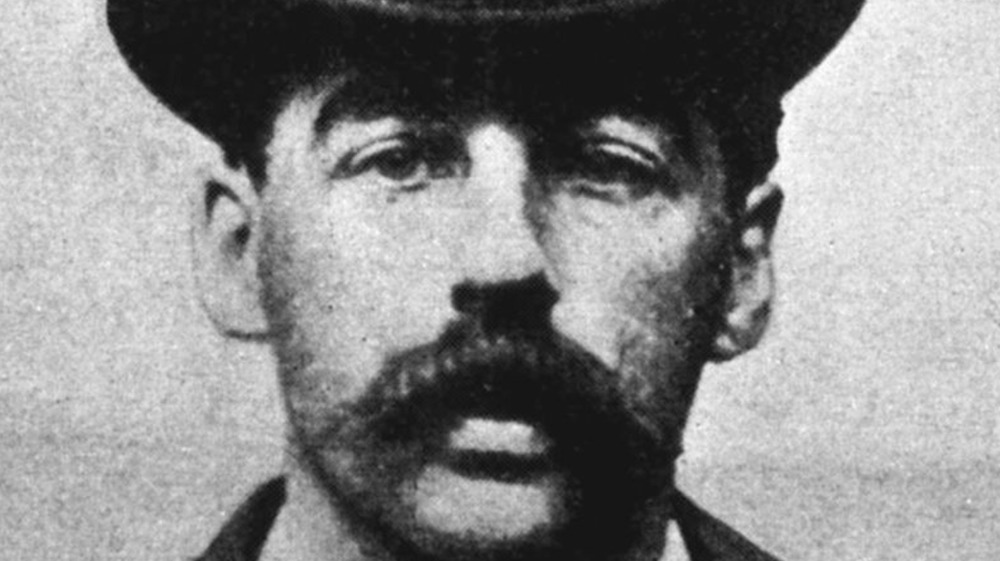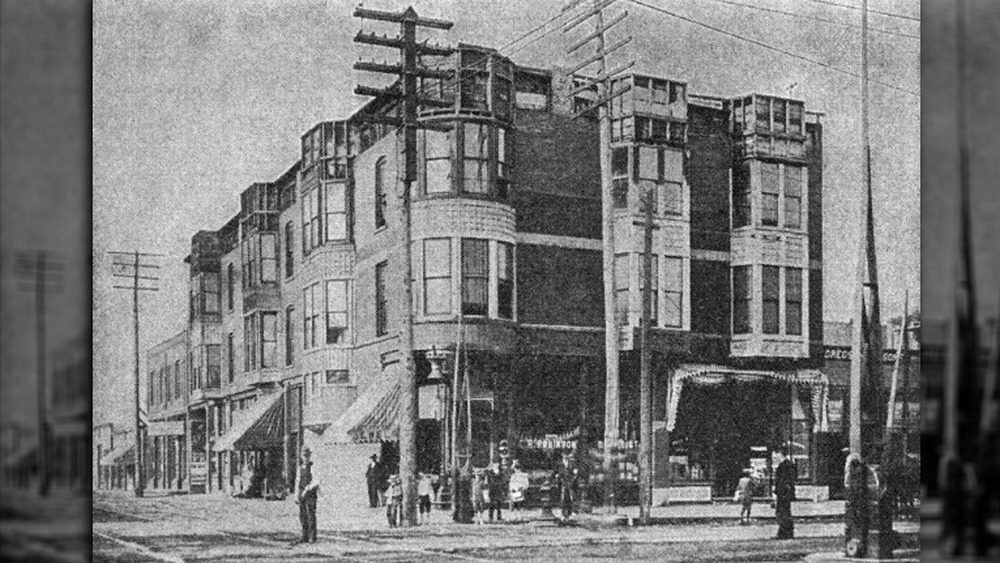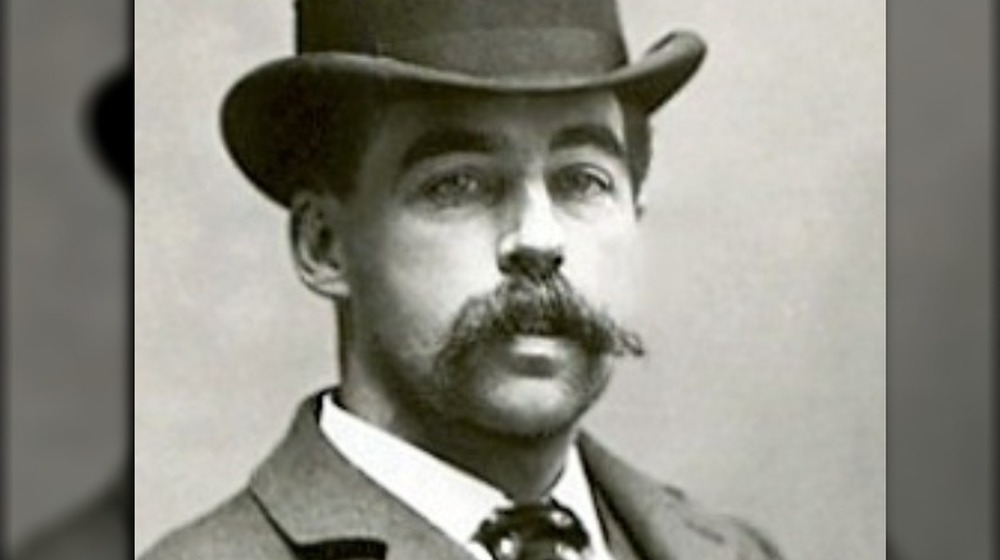This Is How Serial Killer H.H. Holmes Died
When H.H. Holmes was executed in 1896, he was only 34. But by the time that short life was over, he would become known as one of the first famous serial killers in the U.S.
Biography tells us that Holmes was born Herman Webster Mudgett in 1861. He had a troubled childhood while growing up in New Hampshire, but he managed to pull himself together enough to gain entry into medical school at the University of Michigan. He then moved to Chicago in 1886 and changed his name, working as a pharmacist. Eventually he bought the pharmacy from the owner's widow (who mysteriously disappeared), and built an elaborate home across the street. Holmes called it "The Castle," but it would eventually become known as "The Murder Castle." Rumors and a sensationalist press claimed that the building was complete with secret passageways, fake walls, and trapdoors, according to History.com. There were other rumors of rooms that had been soundproofed, that he was able to fill certain rooms with poisonous gas to end the lives of his victims blood-free, that the basement contained a lab for his experiments.
Holmes is caught after people began disappearing
Before long, local young women and tourists who had rented rooms from Holmes during the 1893 World's Fair began disappearing. Holmes later admitted to selling the bodies to medical schools as anatomy specimens. A series of insurance scams raised suspicions that led investigators to finding two bodies at The Castle, sending Holmes on the run. But it was the murder of his business partner — Benjamin Pitezel — in Philadelphia that ended everything for Holmes. He confessed, saying, according to Crime Magazine, "I was born with the devil in me. I could not help the fact that I was a murderer, no more than a poet can help the inspiration to sing." In October 1895, Holmes was put on trial for the murder of Benjamin Pitezel, and was found guilty and sentenced to death. Following his conviction, Holmes confessed to 27 murders across the country, but the police could only prove nine. At the end of the day, he was only convicted of the murder of Pitezel. The lore that followed depicted Holmes as a bloodthirsty man who kept the remains of scores of bodies on his Chicago property, although some argue the numbers were inflated to sell pulp books.
H.H. Holmes was executed and later dug back up
On May 7, 1896, Holmes was hanged at Moyamensing Prison in Philadelphia, for the murder of Pitezel. Until the moment of his death, Holmes remained calm and showed very few indications that he was fearful of what was about to happen, The New York Times reported at the time. The only anxiety he seemed to have was over what would happen to him after his death. He asked for his coffin to be contained in cement and buried 10 feet deep. It was meant to be protection against the grave robbers he was convinced would steal his body for dissection. But when it came time for Holmes to be placed in the hangman's noose, his neck did not snap. Instead, he strangled to death over the course of 20 minutes.
But that wasn't quite the end of the story. In 2017, Holmes' body was exhumed for testing after decades of rumors that he had somehow conned his way out of execution and escaped from prison. And it was all for a television show. Descendants requested the exhumation for a series called American Ripper on the History Channel, according to an Associated Press report posted by the Chicago Tribune. Part of the show looked at whether Holmes escaped, and findings were revealed in the final episode. Because his coffin was contained in cement, his clothing was almost perfectly preserved, and his mustache was intact. Holmes was positively identified by his teeth before being reburied in suburban Philadelphia.


